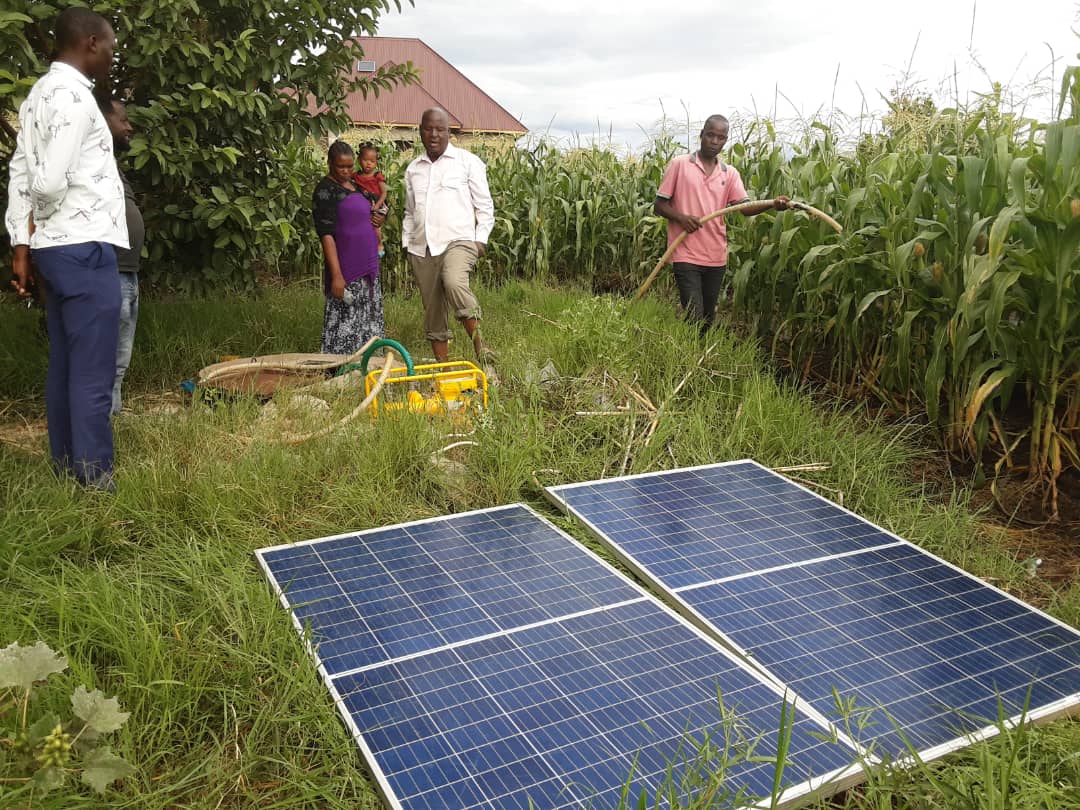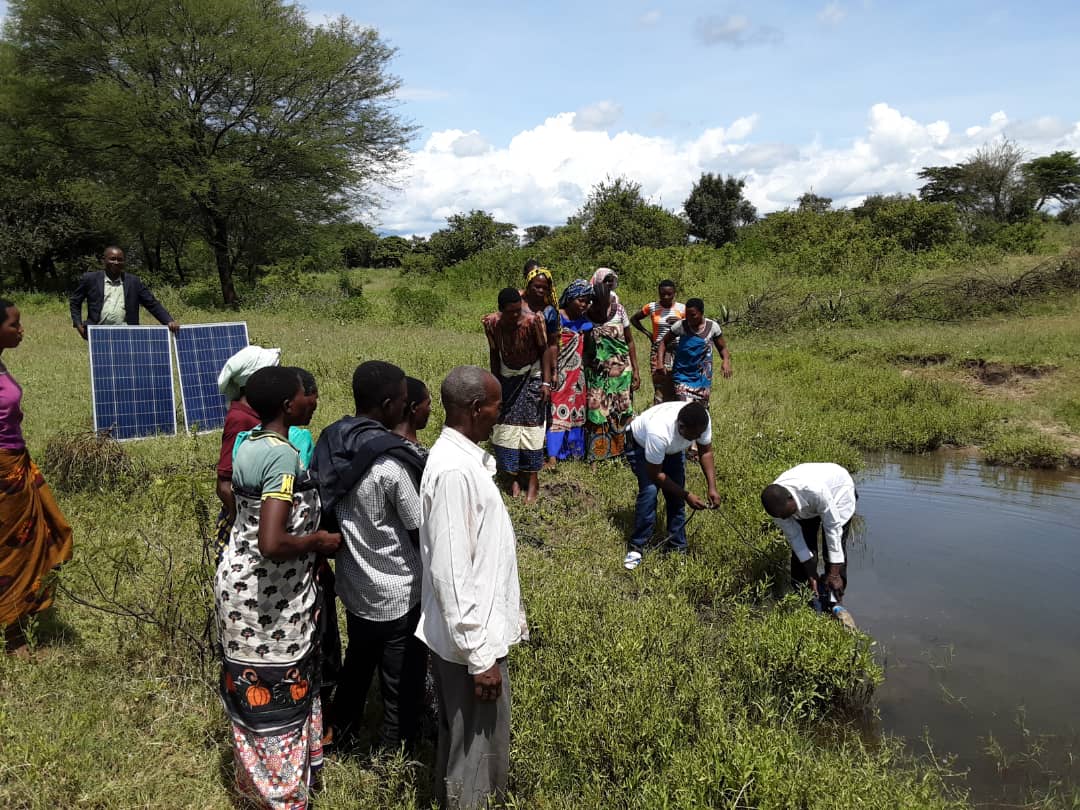Water from the sun: raising awareness of solar irrigation amongst Tanzanian farmers
Handa Mbeho owns a maize farm in the Bariadi district in Tanzania and has long used a pump powered by a petrol generator to irrigate his crop. Aside from the negative health and environmental impact of the engine fumes, using this method gives rise to some serious financial and logistical difficulties for Handa who uses at least fifteen litres of petrol each day to power the generator. The local cost of petrol is very high and subject to shortages. In addition, there are very few petrol stations in the rural area where he lives, forcing him to travel long distances to replenish his supply. The heavy use and poor-quality of his equipment leads to frequent breakdowns, necessitating time-consuming and costly trips to the repair centre.
Like many other smallholder farmers in marginalised rural areas, Handa remained unaware that solar-powered irrigation is far more cost-effective over time until he learned more through the Water and Energy 4 Food programme (WE4F) programme. Smallholder and subsistence farmers typically choose petrol or diesel-powered generators because they are more affordable upfront, but are then forced to meet unpredictable maintenance costs because they are more prone to breakdown. Moreover, the high cost of fuel quickly undermines their initial economic advantage. As climate change leads to more frequent droughts, farmers are more dependent on irrigation, so such ongoing costs will constitute an increasingly heavy burden.
By contrast, solar pumps offer several key advantages for farmers in sunny regions like East Africa. Although they come with a higher upfront cost, solar pumps are more reliable and impose lower operational and maintenance costs. Fredrick Tunutu, Energy 4 Impact’s Programme Manager, says that helping farmers understand the economic case for solar irrigation is crucial:
The key piece of information is that adopting solar irrigation systems can typically increase farm income by $200-300/year, through a combination of cost savings and higher yields.
In fact, the average farmer can repay upfront equipment costs in around six months through fuel costs savings alone. Compared to using generators powered by fossil fuels, the lifetime costs of solar pumps are between 20 to 55% lower.
Making more smallholder farmers aware of the financial benefits gained through solar-powered irrigation is at the heart of the collaboration between German development agency GIZ (Deutsche Gesellschaft für Internationale Zusammenarbeit) and Energy 4 Impact as part of the WE4F programme.
Energy 4 Impact has recently partnered with three solar equipment suppliers, selected for the quality and suitability of their products and knowledge of the target region, to promote the uptake of innovative irrigation technologies amongst farmers in the Lake Zone region of Tanzania. Through a range of awareness-raising and education activities, the companies, Simusolar, Davis and Shirtliff and AG Energies, will showcase a range of solar water pumps, providing more information on their usage.
After conducting detailed assessments of the water and technology needs of farmers interested in acquiring a solar pump, Energy 4 Impact helps farmers purchase solar irrigation equipment by facilitating access to financing offered either by local financial institutions or directly by the suppliers in the form of a pay-as-you-go (PAYG) package in which farmers pay an initial fee for the installation of the system then regular payments until they own the system outright. Upon installation, the companies provide training on usage and maintenance. Energy 4 Impact also offers 360-degree advisory support on agronomy, sustainable consumption and production, efficient post-harvest management, business, technology, investment readiness, routes-to‐market and cash‐flow management. Such specialist advice is key to maximising the profitability of their farms.
District Agriculture Irrigation and Cooperative Officers have helped to identify areas suitable for irrigation and smallholder farmers that own 1 - 5 acres of agricultural land with access to a reliable source of ground water. Handa Mbeho is one of the 306 farmers in the Lake Zone recruited for the project. He says,
I was not aware there were other options for my farm than my petrol generator and I’m excited to now find out there are better alternatives I can afford.
Handa has made an advance cash payment for a pay-as-you-go solar water pump with soft loans from friends and relatives. Like Handa, other smallholder farmers recruited onto the programme are likely to soon see better yields and returns, whilst also becoming more resilient to droughts and the hazards posed by climate change over the longer term.
Awareness of the advantages of solar irrigation will also continue to grow across the region once demonstration sites are fully established on all selected farms. District Agriculture Irrigation and Cooperative Officers are further supporting the project by sending irrigation engineers and horticulture officers to assist in the establishment of eight sites. Once other smallholder farmers can see the success of recruited farmers, and have the opportunity to receive training on the usage and maintenance of solar pumps, awareness of the benefits of solar irrigation is set to spread even wider.


